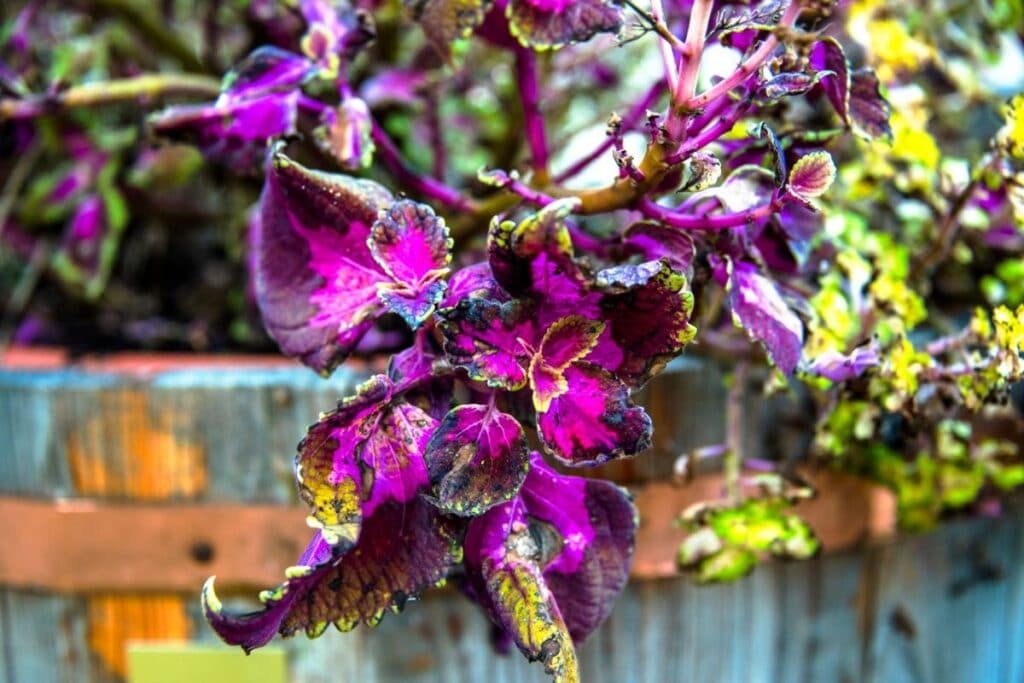The best thing about plants is their variable nature. They come in different sizes, shapes, and colors. They can look like animals and sometimes, they can look like other plants. Some plants can even have leaves that look like flowers!
- #1. Aeonium
- #2. Party Time Alternanthera (Alternanthera ficoidea ‘Party Time’)
- #3. Joseph’s Coat Amaranthus (Amaranthus tricolor)
- #4. Rex Begonias
- #5. Bougainvillea
- #6. Bromeliad
- #7. Caladium
- #8. Coleus (Plectranthus scutellarioides)
- #9. Coral Bells (Heuchera)
- #10. Crassula
- #11. Croton (Codiaeum variegatum)
- #12. Echeveria
- #13. Oxalis
- #14. Japanese Pieris (Pieris japonica)
- #15. Sempervivum
- #16. Persian Shield (Strobilanthes dyeriana)
- #17. Prayer Plant (Maranta leuconeura)
- #18. Japanese Painted Fern (Anisocampium)
- #19. Elephant Ears Plant (Colocasia)
- #20. New Zealand Flax (Phormium tenax)
- #21. Japanese Forest Grass (Hakonechloa macra)
- #22. Artemisia Plants (Common Mugwort)
- #23. Hosta spp. (Hostas)
Plants with flower-like leaves have vibrant colors and patterns which makes them a favorite for many gardeners and plant collectors.
Flower-like leaves do not mean that a single leaf looks like a flower. Oftentimes, the floral resemblance is achieved by a collection of leaves growing in a rosette around a central stem giving the illusion of flower petals.
Colorful leaf plants can be very beautiful, surpassing even the beauty of its own flowers. There are many types of red and green leaf plants or plants with colorful leaves available out there. They include succulents and shrubs alike.
Here are some types of foliage plants with interesting leaves you can grow:
#1. Aeonium
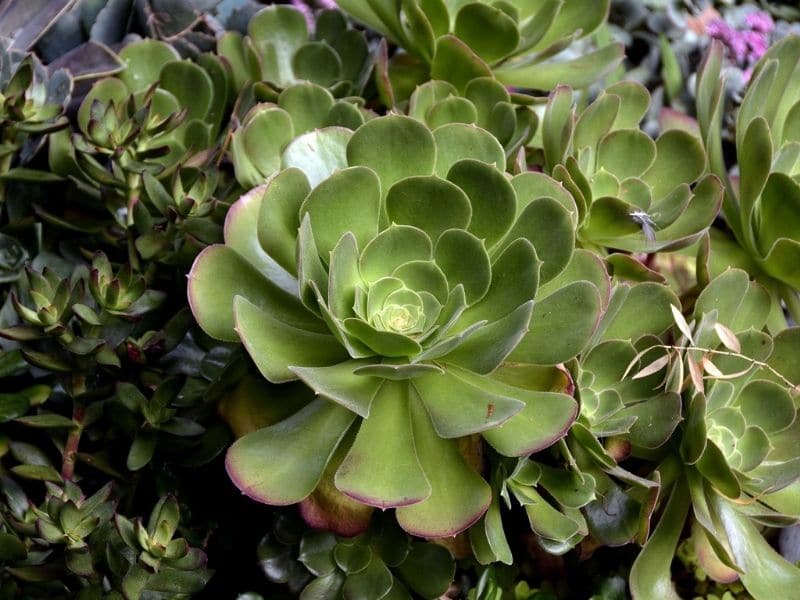
Many succulents are unmistakably flower-like in appearance, especially the rosette-forming types. Aeonium plants are an example of this. These plants are known to produce rosettes that have an uncanny resemblance to an actual rose.
A. canariense – This variety forms large rosettes (8 inches in diameter) of green leaves that looks like a fully open rose.
A. dodrentale – The most rose-like in appearance, this variety forms small tightly packed rosettes that resemble a bouquet of green roses.
#2. Party Time Alternanthera (Alternanthera ficoidea ‘Party Time’)
Living up to its name, this gorgeous plant features deep green leaves with lively, bright pink variegations. The beauty of the foliage is enough for gardeners to pinch off its own bloom.
#3. Joseph’s Coat Amaranthus (Amaranthus tricolor)
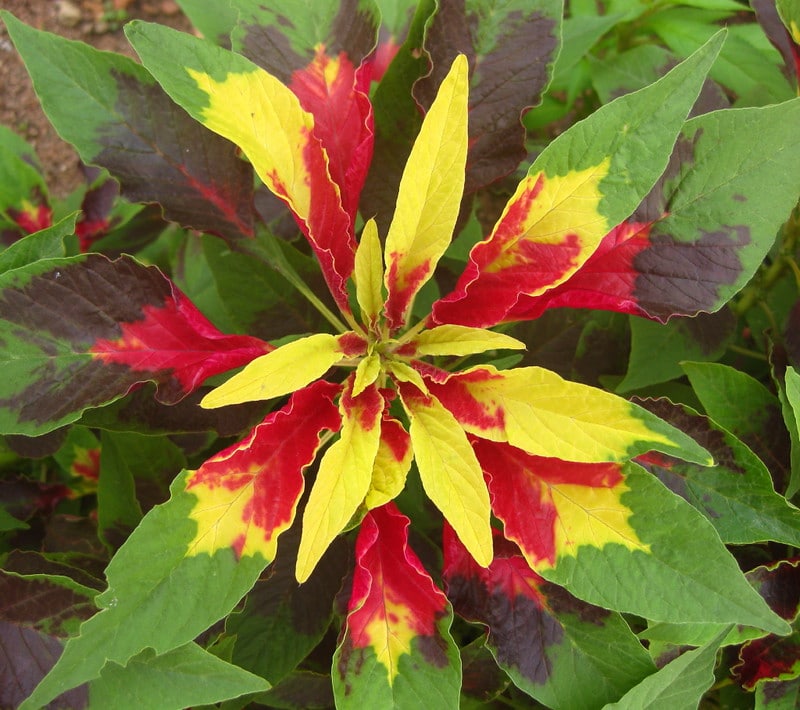
This plant features beautiful leaves of varying shades of yellow, red, and pink. The species also have green-leaf and purple-leaf varieties, but the striking colors of Joseph’s Coat may just be the best one at around 12 inches tall.
#4. Rex Begonias
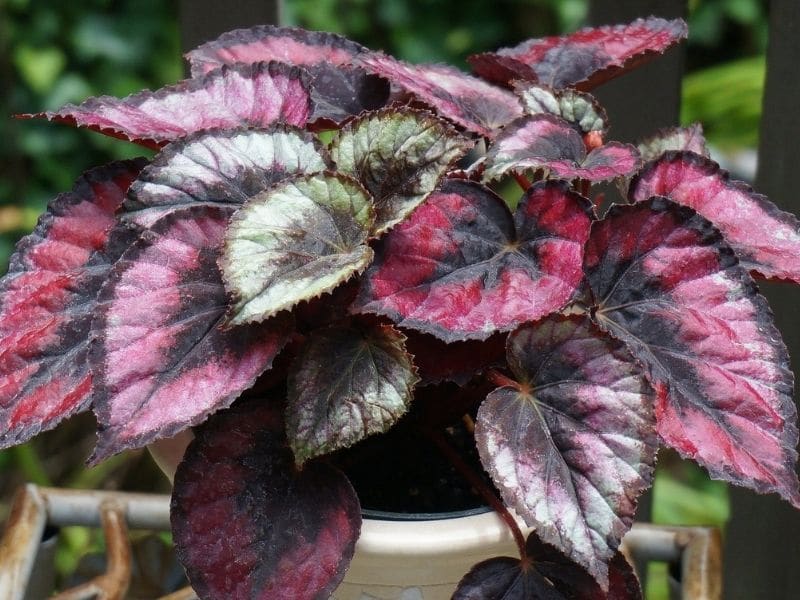
These begonia rex plants are best known for their foliage. The irregularly shaped leaves lend themselves to the varying colors and patterns they come in, providing color and texture to any garden.
If you’re interested in exploring the different types of begonia rex varieties, you’ll be pleased to know that there are over 4,000 varieties of rex begonias.
Rex begonias are an obvious choice for hanging baskets as they are relatively drought tolerant. They can also serve as the main attraction in a container or in a garden bed, provided that there isn’t high humidity.
Bonus points? This foliage plant can bloom from early spring until the first frost!
#5. Bougainvillea
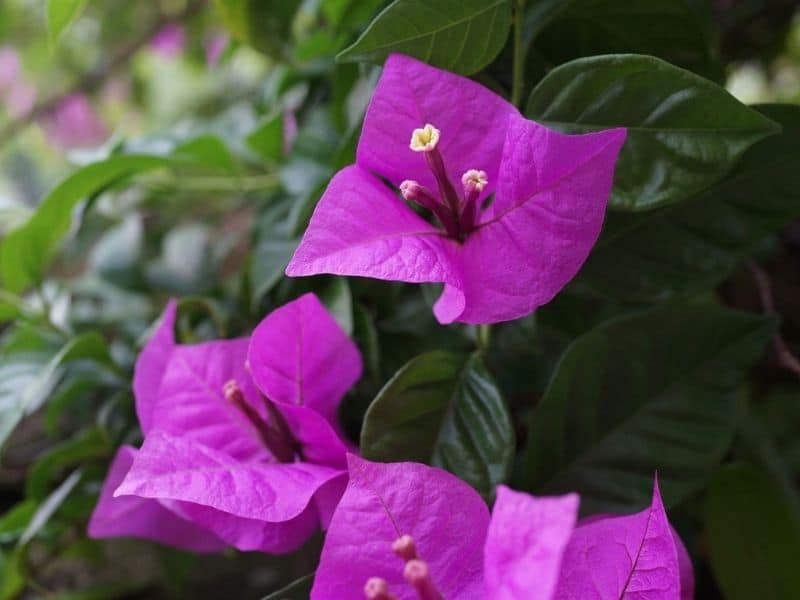
The brightly colored ‘flowers’ of the bougainvillea are actually modified leaves called bracts that surround the actual flowers. They come in many different colors and some varieties even have variegated leaves.
#6. Bromeliad
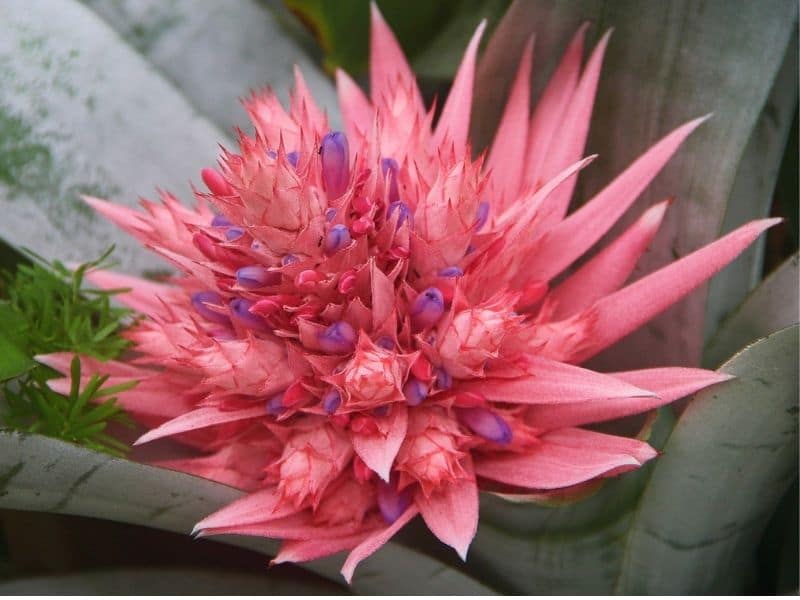
Bromeliad plants have equally striking foliage and blooms. Their leaves develop varying shades of red, yellow, and orange. The strikingly colored leaves are often confused as the flowers which only bloom once.
Growing up to 12 inches tall (well over a foot tall in most cases!), this plant thrives in full sun and well draining soil.
#7. Caladium
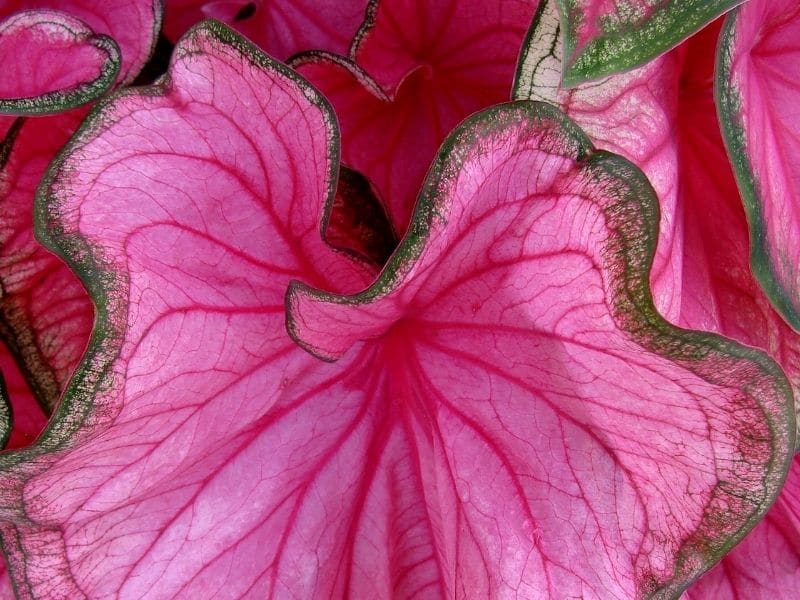
These relatively big leaf plants with leaves that look like heart-shaped flowers of varying colors and patterns. Some of the popular varieties of caladium are ‘Rosebud’, ‘Postman Joyner’, Caladium ‘Bicolor,’ and ‘Pink Symphony’.
Caladium, an easy-to-grow plant, thrives in full sun and well draining soil as well.
#8. Coleus (Plectranthus scutellarioides)
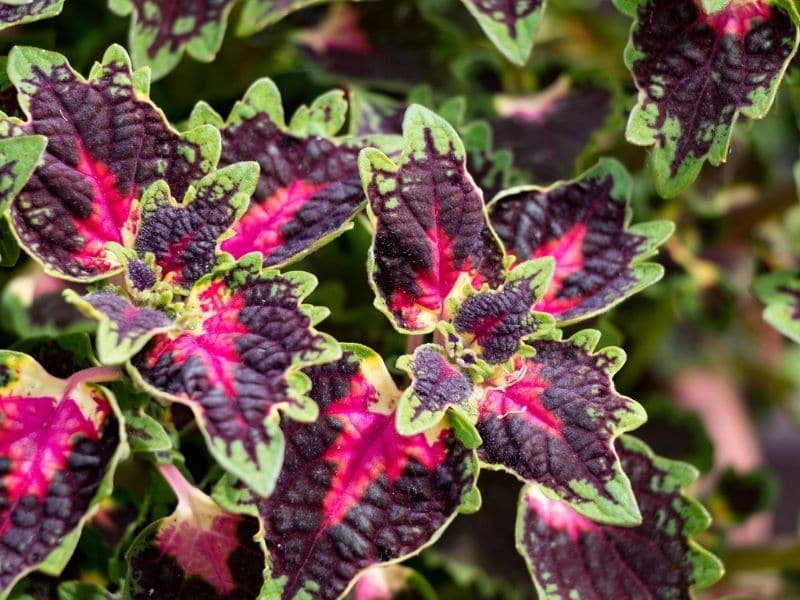
This tropical plant is one of the most highly hybridized ornamentals which results in a wide array of brightly colored foliage. In fact, the plant has varieties of every color in the spectrum, except blue. The leaves grow in alternating patterns in a stem giving it a petalled look.
Wizard Mix – This coleus variety features a varied mix of colors—you never know what you are gonna get from a packet of seed. It thrives in full sun.
Trailing Plum – This creeping variety features bright purple leaves that grow darker as it nears the base. It also performs best in full sun.
#9. Coral Bells (Heuchera)

Developed from a green-leaf plant with beautiful flowers, coral bells are now popular for their luscious, colorful foliage. This plant forms a very thick ground cover of brightly colored leaves. The leaves themselves are rounded and lobed with varying hues of purple, rose, lime, and gold making it look like a large bouquet of flowers.
#10. Crassula
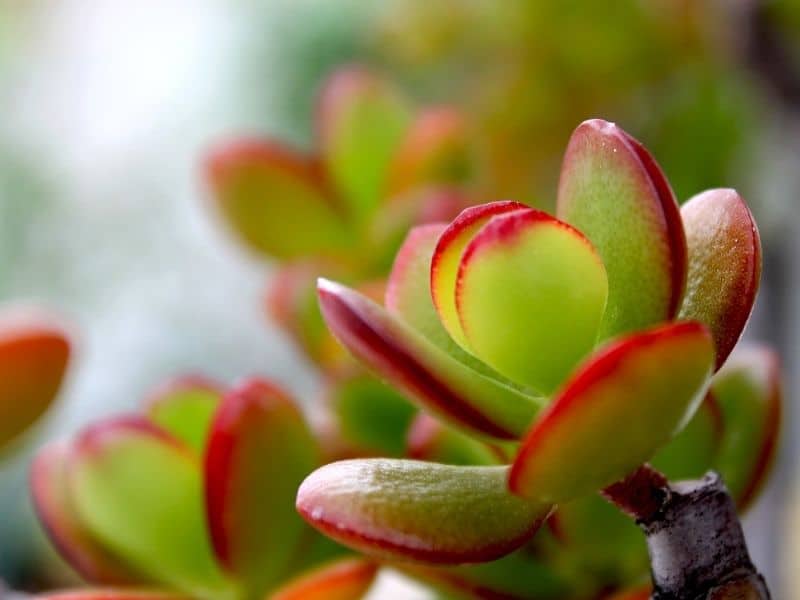
A popular succulent, many varieties of crassula are unmistakably rose-like in appearance, called a rosette.
C. tomentosa – This variety features compact rosettes of wooly, green leaves.
C. rupestris – This variety looks like a necklace of tiny copper roses.
#11. Croton (Codiaeum variegatum)
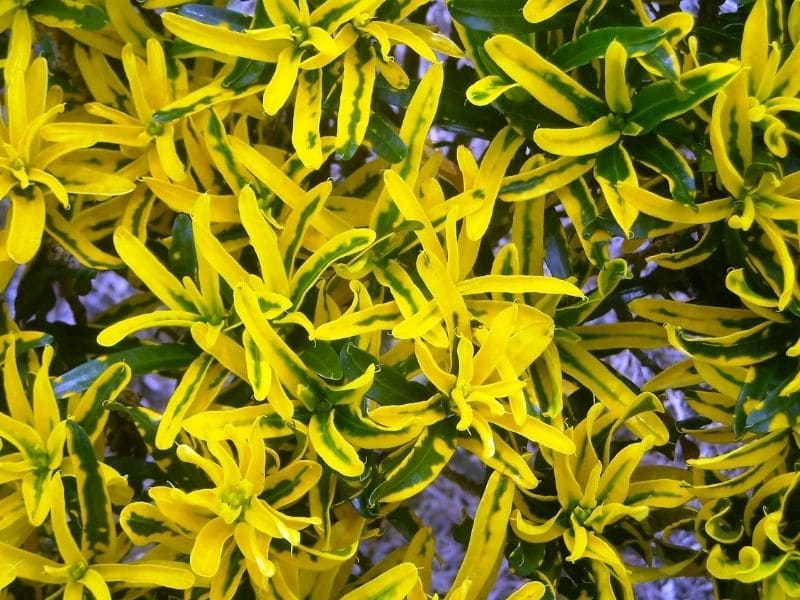
These Codiaeum variegatum plants feature highly varied foliage that can be short, long, twisted, thick, or thin. They also come in variegated colors ranging from green, yellow, orange, red, and purple.
#12. Echeveria
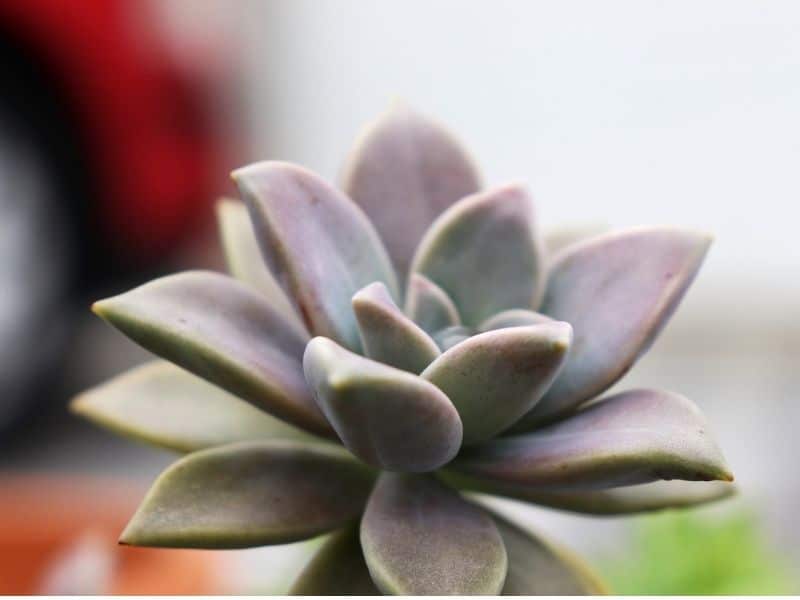
Another succulent, Echeveria is known for its rosettes that come in varying colors and forms. There are numerous varieties of echeveria. Here are some of them.
‘Black Knight’ – This variety features deep purple, almost black leaves that form a black rosette.
‘Perle von Nurnberg’ – This award-winning variety features a large rosette of glabrous leaves that develops a pinkish to purplish hue in full sun.
#13. Oxalis
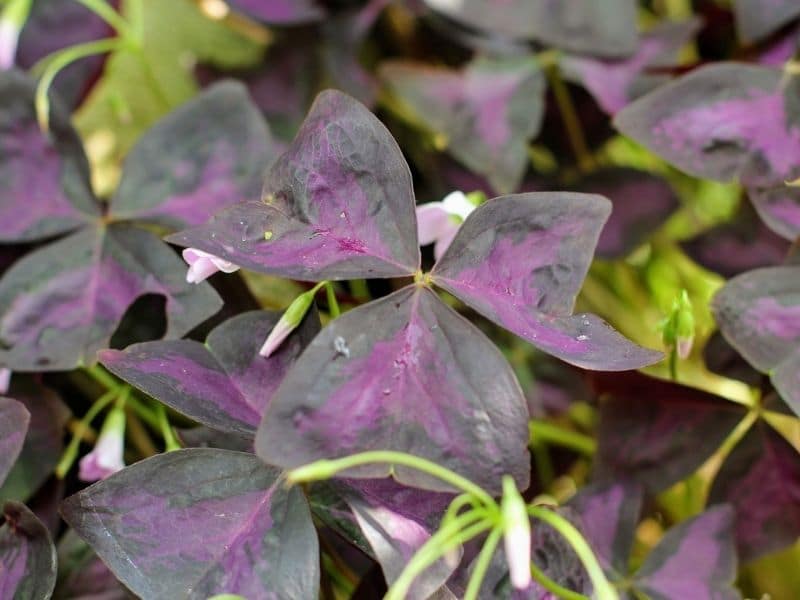
Also known as false shamrocks, these are characterized by tufts of leaves, usually three, that resemble a clover. Several oxalis species are popular as houseplants.
O. tomentosa – These plants feature a tuft of ten to twenty leaflets, forming a flower-like structure similar to an aster. The curious foliage of this plant goes well together with its actual bloom.
O. triangularis – Like any Oxalis species, O. triangularis leaves come in tufts like a three-petaled flower. The leaves have a striking purple color often overshadowing its small white flowers.
#14. Japanese Pieris (Pieris japonica)

The young leaves of this evergreen shrub start off with an orange-bronze color making it look like colorful blooms.
When the Pieris japonica shrubs mature, the leaves turn a deep green color, lending the strikingly colored young leaves a dark backdrop. These plants grow great in a woodland garden, particularly in colder climates.
#15. Sempervivum
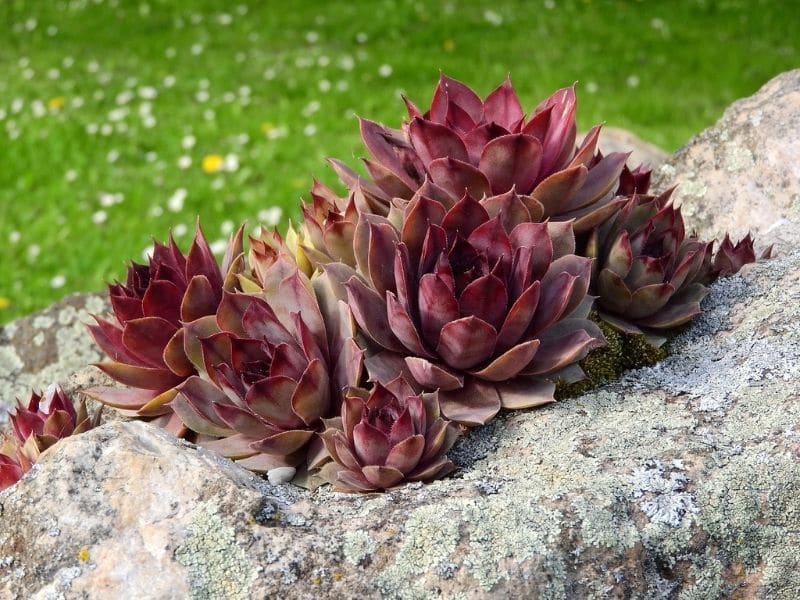
These succulents produce many tightly packed rosettes of numerous varying hues. When viewed from above, they look like a bouquet of multicolored roses.
#16. Persian Shield (Strobilanthes dyeriana)
Also known as the ‘royal purple plant,’ Persian shield features purple leaves with green margins. Young leaves are more brightly colored than matured leaves and form terminal flower-like structures. In full color, the leaves take on an iridescent glow.
#17. Prayer Plant (Maranta leuconeura)
With its purple undersides and patterned leaves, the prayer plant is a popular indoor plant. It’s low maintenance and can grow in either partial sun or shade.
These popular indoor plants are also an excellent option for removing toxins from indoor air. Indoors, indirect light or partial shade is fine, too. Just watch out for common indoor plant pests like spider mites.
#18. Japanese Painted Fern (Anisocampium)
This plant has feathery foliage with a silver-green color. It grows well in woodland gardens and prefers soil conditions that are moist and well-drained. Japanese painted ferns are great for adding texture and a bright green background to your landscape design in just about any growing season.
#19. Elephant Ears Plant (Colocasia)
As the name suggests, this plant has large, elephant ear-like leaves. It can grow up to 12 inches tall to two feet tall and requires partial shade. Elephant ear plants are ideal for adding a tropical vibe to your garden and grow well in well-watered soil.
#20. New Zealand Flax (Phormium tenax)
With long, lance-shaped leaves, New Zealand flax is a great option for adding visual interest to your garden. It grows well in USDA zones 8-11 and prefers direct sun. Newer cultivars come in a range of colors, including green, orange, red, and yellow.
#21. Japanese Forest Grass (Hakonechloa macra)
This plant has a fine texture and grows well in partial sun or shade. It’s an excellent option for adding a calming and serene feel to your garden. Japanese forest grass tolerates cold weather and can withstand temperatures as low as -30 degrees Fahrenheit.
#22. Artemisia Plants (Common Mugwort)
This foliage plant is known for its deeply lobed, silver-green leaves. It prefers well-drained soil (ideally somewhat moist soil) and requires partial sun. Artemisia is low maintenance and perfect for adding a soft, silvery texture to your garden without needing a lot of bright light.
#23. Hosta spp. (Hostas)
Commonly known as hostas, this foliage plant has leaves that come in a range of colors and patterns. Hostas grow well in shady spots and prefer moist soil that is well-drained. They are easy to care for and can survive during the winter months with proper care.
It grows to less than two feet tall but is still great for making an impact. Plus, unlike many plants, it doesn’t require a lot of bright live to thrive!
We hope you enjoy our list of colorful foliage plants. For more flowering plants to grow, check this guide!
References
Reference List:
Kobayashi K.D. McConnell J. Griffis J. ‘Bougainvillea‘. UH-CTAHR. Ornamentals and Flowers. 2007.
Murphy D.M. Duea A.W. ‘The Complete Guide to Growing Windowsill Plants: Everything You Need to Know Explained Simply’. Atlantic Publishing Company. 2011. PP 110.
‘South African Oxalis Ten‘ Pacific Bulb Society. 2016. (online).
‘Pieris japonica‘. Missouri Botanical Plant Finder. 2020. (online)
Close
*Featured image by depositphotos/FashionAnatomy

